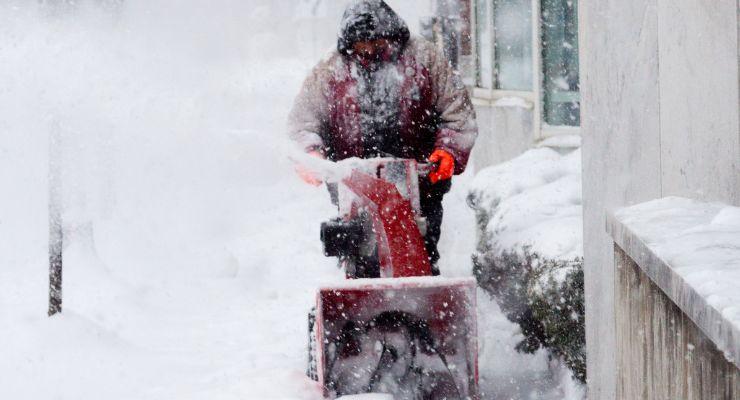Let’s be honest; dealing with winter snowfall can be a bit of a burden for homeowners who are left to clear their driveways. Snow blowers offer an efficient and effective solution, but how does one use this handy piece of equipment?
Well, in this blog post, we’re going to provide some valuable snow blowing tips so that you can make the most out of winter!
Choosing the Right Snow Blower
Before getting into the detailed tips on how to use a snow blower, hopefully, you have already chosen the right machine. But is it the right one?
Picking the optimal snow blower for your requirements calls for careful consideration of various elements. Size and type of land, as well as average yearly snowfall in the area, will help you identify exactly what model is best suited to your needs.
If your property receives up to 4″ of snowfall each year, a single-stage gas blower is more than capable of providing the required clearance. If you require further performance, however, consider investing in either a two-stage electric snow blower or a gas model for better results.
Aside from choosing the right size and type, using one over shoveling offers many advantages in terms of time and effort saved. Faced with a foot of heavy wet snow, choosing a powerful snow blower can make quick work of it without leaving you exhausted after hours spent by hand shoveling.
Selecting the right snow blower can be an invaluable asset in winter, providing unparalleled efficiency and convenience when compared to manual clearing. With a quality power tool, you’ll have no problem keeping up with Mother Nature!
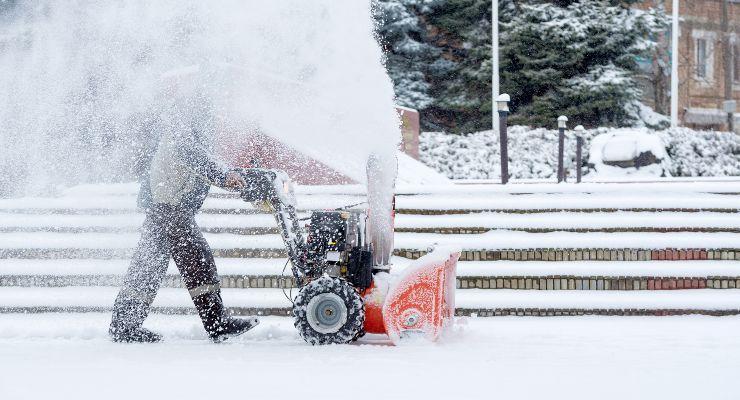
Preparing Your Snow Blower
Read the Manual
For an efficient and secure operation of your machine in cold temperatures, it is essential that you thoroughly read the manufacturer’s manual. This guidance will show you how to adequately prepare for this environment. In addition, understanding how to use it is just as important so that you can take advantage of its features while also staying safe!
Preparing Your Snow Blower for the Winter Season
As the winter season approaches, it is important to ensure that your snowblower is ready for all of those upcoming snowstorms.
Make sure you use a fuel stabilizer and change oil with synthetic motor oil before storing; this will help ensure optimal performance when it comes time for use.
To ensure that your machine will remain reliable and running smoothly, regular maintenance is a must.
Conducting routine check-ups and making small adjustments can save you from any unforeseen surprises further down the line – why not put in some extra effort now to avoid costly issues later on? With proactive care, you’ll be able to enjoy its dependable operation throughout the entire season!
What to do Before Using the Snow Blower
Preparation before use is also essential, including filling the tank with fresh fuel and inspecting all parts of the engine.
Make sure you only refill the machine when the engine is cooled off. As the gas tank is right above the engine, it happens way too often that fire starts when spilled fresh fuel catches fire on the hot engine.
Preparing Your Property
Preparing your property before using a to blow snow is key for a successful winter season.
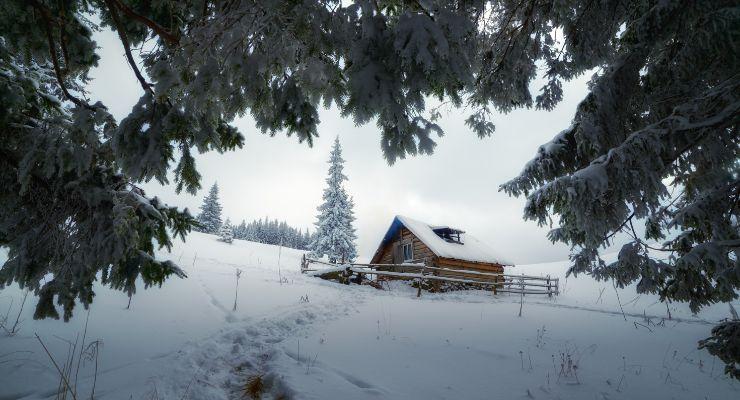
Remove Obstacles
Start with an inspection of your property; this will help you identify potential obstructions that need to be removed before snow blows such as rocks, toys, dog tie-out cables, extension cords, holiday light cords, or garden hoses.
If your area experiences a significant amount of snowfall each year you may find frozen newspaper tucked beneath the surface of the snow. It’s important to remove your morning newspaper as it can hinder progress while using the blower.
Mark off the Perimeter
After removing obstacles from your property, mark off the perimeter of the walk and driveway to easily maneuver around sharp bends and corners safely. By preparing your property to blow snow in advance, including these driveway markers, you’ll be able to save time and keep your home looking neat during the cold weather months.
Regularly check the weather forecast so you can prepare your property before snow starts.
Plan the Snow Clearing
Decide Where to Pile the Snow
Developing a snow-blowing plan is an important step in snow removal. When planning snow clearing, it is important to choose where to pile the snow so that it does not block access points or pathways. It is also not nice to throw snow piles in your neighbor’s yard.
Controlled snow-blowing habits should also be practiced and some tips include never blowing snow toward people, houses, cars, or onto the street.
Snow Clearing Patterns
Planning and creating snow patterns in advance, depending on the area and working surface can also help make snow removal more efficient.
There are a few different snow-clearing patterns that you can use when operating a snow blower. The most effective pattern will depend on the size and layout of the area you are clearing, as well as the type and amount of snow you are dealing with.
One common pattern is to start in the middle of the area and work your way outwards, making overlapping passes as you go. This can be effective for clearing large, open areas such as driveways.
Another option is to begin snow blowing from a corner and work your way across the area in a straight line. This can be useful for clearing sidewalks or other areas where you need to follow a specific path.
If you are clearing a driveway with a sloped surface, you may want to start at the bottom of the slope and work your way up, clearing the snow in layers. This can help to prevent the snow from becoming too heavy and difficult to lift.
It is generally a good idea to clear the snow in a consistent pattern to ensure that you cover the entire area evenly and efficiently. You may want to experiment with different patterns to find what works best for your particular situation.
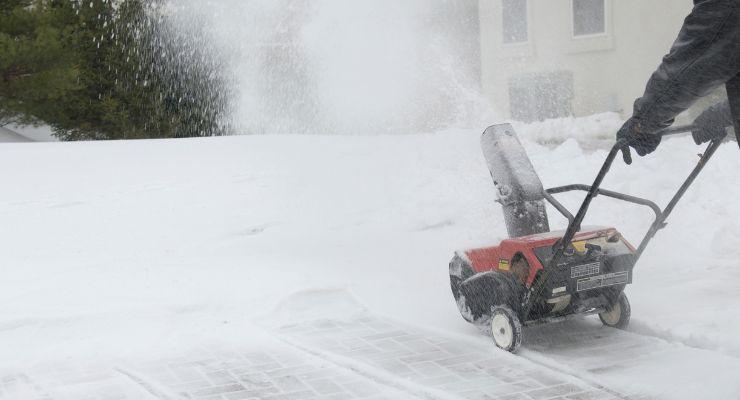
Operating Your Snow Blower
How to Start and Operate Snow Blowers Safely
- Before taking your blower out for its first spin, make sure that you’re well-versed in how to use it by studying the owner’s manual and practicing with its controls on a safe patch of land. Doing so will help ensure that you have an enjoyable experience while using your machine!
- Wear appropriate clothing and footwear when operating a snow blower. This should include warm, waterproof clothing, bulky jackets, gloves, and insulated boots.
- Clear any debris or obstacles from the area you will be clearing before starting the snow blower. This includes rocks, sticks, and other objects that could become caught in the auger or thrown out of the chute.
- Ensure the fuel tank is adequately filled with the recommended type of gas, as specified in your snow blower’s owner manual, before firing up the machinery.
- To start the snow blower, follow the manufacturer’s instructions. This may involve priming the engine, setting the choke, and pulling the starter cord.
- Once it’s running, adjust the throttle as needed to control the speed of the engine.
- Begin clearing the snow by positioning the snow blower at the edge of the area you want to clear. Engage the drive and auger, and slowly push the snow blower forward. You also have to think about the wind. Try to direct your machine where the wind is blowing, this way you’ll save a lot of time.
- If you’re dealing with heavy or wet snow, make several passes over the area to guarantee that all of it is cleared. Overlap these passes and take your time so that you don’t miss a single spot!
- To receive a clean driveway, begin from one edge and work in overlapping strips across. For sidewalks, commence at the corner and move along in a straight line for an even finish.
- After you have finished your work, switch off the engine and allow it to cool before putting it away.
Tips for Clearing Different Types of Snow
Here are some great tips for clearing different types of snow with a snow blower:
Light snow
When dealing with light, fluffy snowfall, you can quickly and easily clear it away by using the machine on its highest setting (full rpm) – no need to make multiple passes!
Heavy snow
For denser and heavier snow, you may need to repeat the process a few times to ensure the area is completely clean. Begin by using your snow blower on its highest auger setting and then progressively lower it each time for any remaining patches of snow.
Wet snow
Trying to remove snow that wet can be a backbreaking task, especially if it begins to freeze. To make the job easier use a snow blower on its highest setting and multiple passes till every last piece of the slushy white stuff has been cleared off the surface. It’s not a race though, so just make sure you push it forward slowly.
Snow with debris
If the snow contains debris such as sticks, rocks, or leaves, it can be not just difficult to clear but dangerous with a snow blower. It is best to avoid this type of snow, and next time prepare the area for debris before snowing.
To clear this type of snow, a heavy duty 2 or 3 stage snow blower might work. Be sure to watch for any debris that may become caught in the auger or thrown out of the chute.
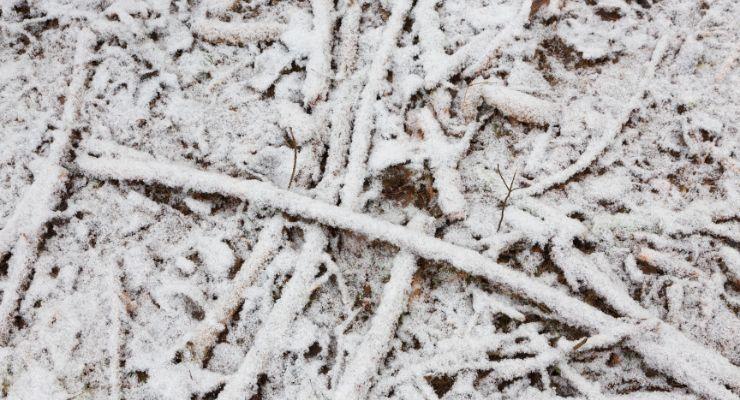
Snow Blowing Tips, Techniques, and Safety
Avoid Common Mistakes
Overloading the chute
When utilizing a snow blower, it is easy to make several common mistakes. To ensure that your machine works correctly and isn’t clogged or stalled due to overloading the chute, always clear only as much snow as your snow blower can handle at once. If you notice the chute becoming overloaded with too much snow, be sure to stop the blower and take some time to clean out any excess buildup before continuing.
Not clearing the auger
To ensure your safety and prevent damage to the snow blower, it’s essential to clear out any rubbish that may become stuck in the auger after every use. Additionally, while you’re operating the machine, be sure to regularly check for debris that could build up in its path. By being mindful of this small task each time you use your snowblower, you can prevent clogs or other potential hazards.
Safety Tips
- It is important to wear proper clothing, so don’t wear loose fitting clothing, as it can be caught in the snow blower, or you may catch a cold.
- Wear protective gear, such as gloves and eye protection, and be careful to avoid any hazards while operating the machine.
- Keep children and pets out of the way!
- Before clearing the chute and auger, make sure the snow blower is completely turned off. To clear the chute, turn off the snow blower and use a long, sturdy object, such as a chute clean out tool, shovel, or broom handle, to push the blockage through the chute. Never use your arm to clear it!
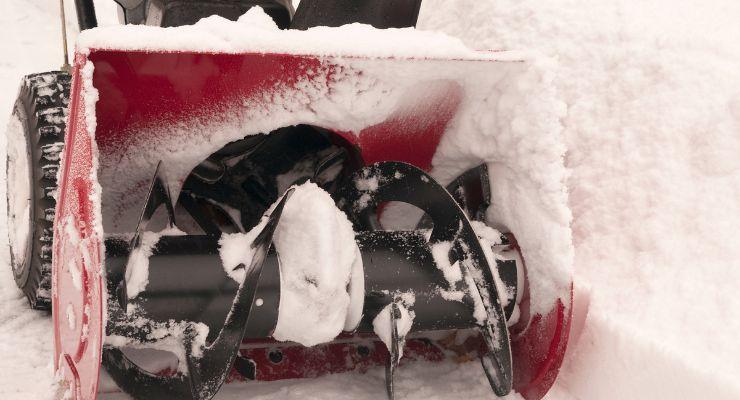
What to do in Case of Emergency?
If your snow blower stalls or malfunctions, turn it off and allow it to cool down before trying again.
Ensure that the fuel level, as well as the spark plug, are working efficiently if you’re still unable to get the engine running. If this doesn’t remedy your issue, refer to the instructions of the manufacturer or enlist professional repair shops for assistance.
Attempting to force your snow blower through heavy, compacted snow is a surefire way to get stuck. If you are already stuck, try shoveling or using another tool to clear an easy path for the machine.
In the event of an injury, while utilizing a snow blower, it’s essential to seek medical assistance promptly. For small injuries, you can clean them and apply a bandage before continuing to check for any warning signs of infection. In case the injury is more serious, call for medical assistance immediately.
FAQs
How Many Inches of Snow is Needed Before you Can Use a Snowblower?
It is generally recommended to use a snow blower when there are at least 2-4 inches of snow. Using a snow blower on a smaller amount of snow can be inefficient and may put unnecessary wear on the machine.
Should You Wait for the Snow to Stop Before the Snow Blows?
It depends on the forecast. If light snowfall is expected, it is best to wait for the snow to stop before you start blowing it. This will allow you to clear the snow in one pass, rather than having to clear it multiple times.
In case there is a chance of extended, heavy snowfall, it may be worth starting while the snow is still falling. This way, you can avoid the snow getting compacted, or getting too high. On the other hand, it can also be more difficult to see and navigate while using the machine, so having features like headlights or heated handles might make your life easier.
Conclusion
Snow blowing requires some special techniques and safety measures to ensure it is done safely and efficiently. Wet snow can be heavy and difficult to clear, and snow with debris can be dangerous. It is important to wear appropriate clothing and protective gear and observe safety precautions to ensure that you can snow blow safely and effectively.
Be sure to clear the machine of all debris after every use, and watch for any signs of malfunction that may indicate a need for repair. Following these snow-blowing tips and techniques will help you bow the snow safely and effectively so that you can enjoy this time of the year.
And don’t forget to blow with the wind!
